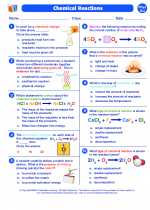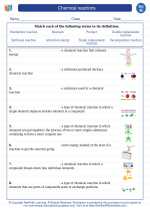Biogas: An Overview
Welcome to the study guide for biogas! Biogas is a renewable energy source that is produced through the anaerobic digestion of organic materials such as food waste, agricultural residues, and animal manure. In this guide, we will explore the production process, composition, uses, and environmental benefits of biogas.
Production Process
Biogas is produced through a natural process called anaerobic digestion. During this process, microorganisms break down organic materials in the absence of oxygen, resulting in the production of biogas and nutrient-rich digestate. The key steps in biogas production include:
- Feedstock Preparation: Organic materials such as food waste, crop residues, and animal manure are collected and prepared for digestion.
- Anaerobic Digestion: The prepared feedstock is placed in a sealed digester where it undergoes anaerobic digestion, facilitated by methanogenic bacteria.
- Biogas Collection: As organic materials break down, they release biogas, which is collected and stored for use.
- Digestate Management: The remaining digestate can be used as a nutrient-rich fertilizer for crops.
Composition of Biogas
Biogas is primarily composed of methane (CH4) and carbon dioxide (CO2), with small amounts of other gases such as hydrogen sulfide and traces of water vapor. The composition of biogas can vary depending on the feedstock and the efficiency of the digestion process.
Uses of Biogas
Biogas has diverse applications, including:
- Electricity Generation: Biogas can be used in gas engines to generate electricity for residential, commercial, and industrial purposes.
- Heat Production: Biogas can be burned for direct heat applications such as cooking, heating, and drying processes.
- Vehicle Fuel: Biogas can be upgraded to biomethane and used as a renewable fuel for vehicles.
- Combined Heat and Power (CHP) Systems: Biogas can be used in CHP systems to simultaneously produce electricity and heat.
Environmental Benefits
Biogas offers several environmental benefits, including:
- Greenhouse Gas Reduction: The capture and utilization of biogas help reduce methane emissions from organic waste, which is a potent greenhouse gas.
- Renewable Energy: Biogas is a renewable energy source that can reduce reliance on fossil fuels and contribute to sustainable energy production.
- Waste Management: Anaerobic digestion helps divert organic waste from landfills, reducing environmental pollution and odors.
- Soil Enrichment: The nutrient-rich digestate produced during biogas production can be used as a natural fertilizer, promoting soil health and fertility.
Now that you have an understanding of biogas, you can further explore its production, applications, and environmental impacts to gain a comprehensive knowledge of this renewable energy source.
.◂Science Worksheets and Study Guides Eighth Grade. Chemical reactions

 Activity Lesson
Activity Lesson
 Worksheet/Answer key
Worksheet/Answer key
 Worksheet/Answer key
Worksheet/Answer key
 Worksheet/Answer key
Worksheet/Answer key
 Worksheet/Answer key
Worksheet/Answer key
 Vocabulary/Answer key
Vocabulary/Answer key
 Vocabulary/Answer key
Vocabulary/Answer key
